KEK conducts collaborative studies with researchers both in Japan and abroad. We also provide a venue for collaboration, support advanced education and research at universities, and help develop cutting-edge research in accelerator science and research in related fields. We are also collaborating with industry to develop in the fields of electricity, radiation, machinery, measuring instruments, computers and materials.
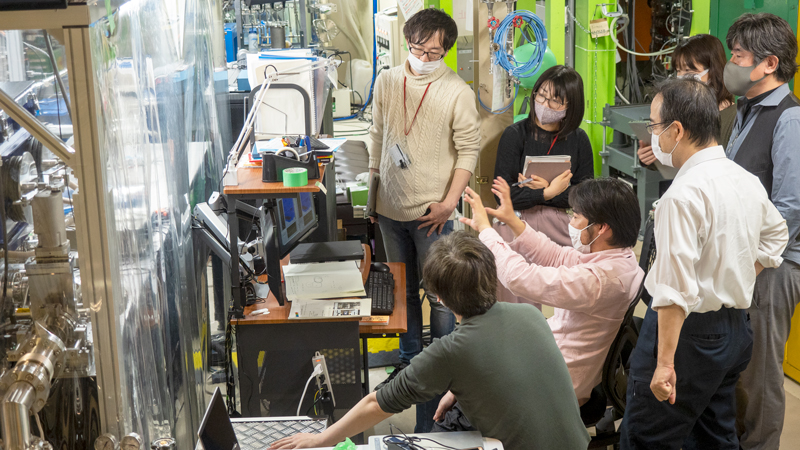
Materials Structure Science
Quantum Beams
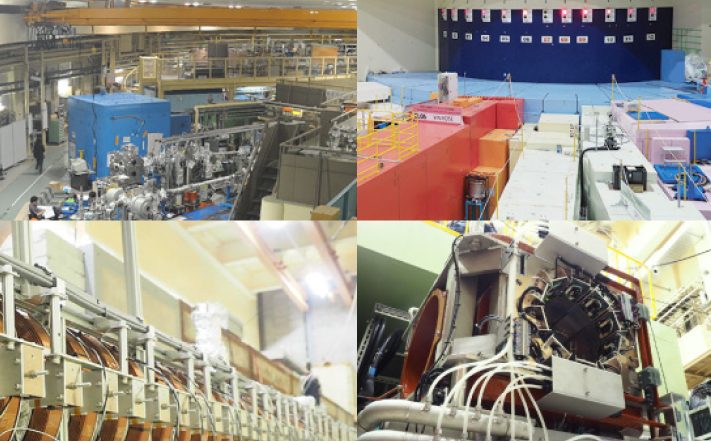
Four unique beams for materials and life sciences are available at KEK: synchrotron radiation, neutrons, muons and slow positrons.
Synchrotron Radiation
Synchrotron radiation is a hig -brilliant light with a wide range of energies ( wavelengths ) from an accelerator. Ultraviolet light and X-rays are used to investigate the configuration of atoms and the behavior of electrons in materials.
Neutron・Muon(J-PARC MLF)
Materials and Life Science Experimental Facility (MLF) is a user facility which provides intense pulsed neutron and muon beams for scientific research and industrial development. MLF stands as a leading facility in the world.
Slow Positron
A positron is the antiparticle of an electron and is generated by an electron beam from a linear accelerator. Gamma rays, which are a result of the annihilation of a positron and an electron in a material, and positronium, which is a pair of an electron and a positron, are used to investigate the structure of materials.
Cryo-Electron Microscope
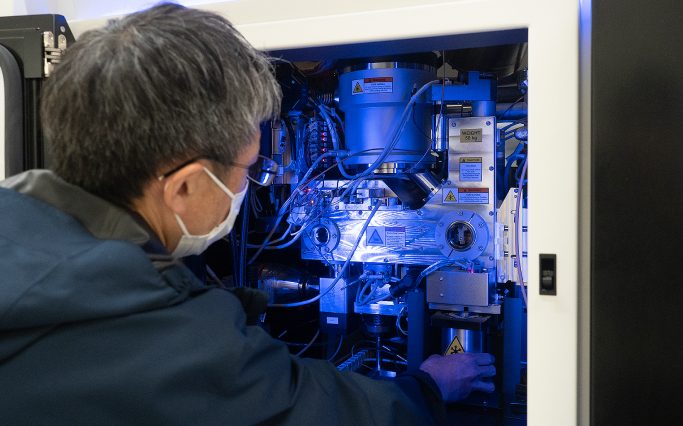
KEK has built a cryo-electron microscope (cryo-EM) laboratory and installed cryo-EMs. The cryo-EM laboratory also has a sample preparation room, an E. coli culture room, and a physicochemical analysis room.
Academic-industrial collaboration
In the academic-industrial collaboration system, researchers from the industry and the IMSS staff work jointly on projects that have resulted in innovative achievements. Human resources, cost and equipment are shared to provide close collaboration support by using the best resources from academia and the industry.
Particle and Nuclear Studies
Belle II Experiment
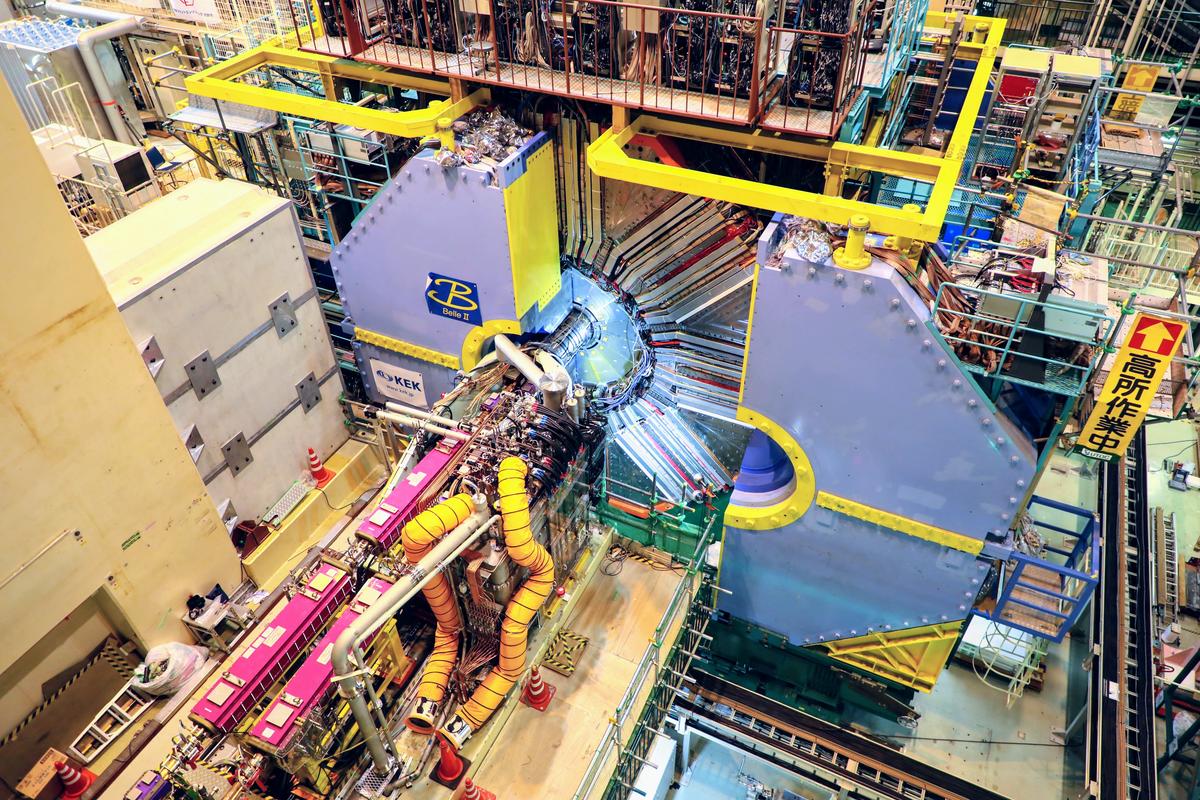
The Belle II experiment explores new physics phenomena that are the keys to solve the mysteries of the universe. By precisely studying the decay patterns of particles produced by the SuperKEKB accelerator, in which we produce extremely rare phenomena of the universe such as the break-down of the particle-antiparticle symmetry, we reveal the nature of yet-unknown new particles and forces. Our aim is to unveil new laws of physics, which would be a step towards solving the mysteries of the anti-matter disappearance from the universe and the nature of dark matter.
ATLAS Experiment
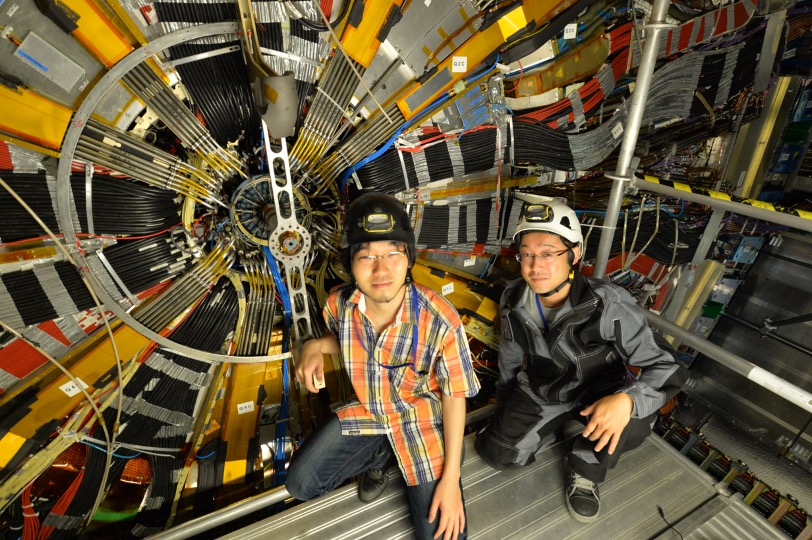
Energy Frontier experiments use high energy accelerators to recreate and measure particles and phenomena that governed the early universe. The LHC/ATLAS experiment at CERN near Geneva, Switzerland, is now investigating the Higgs boson discovered at the LHC and searching for new particles.
T2K Experiment
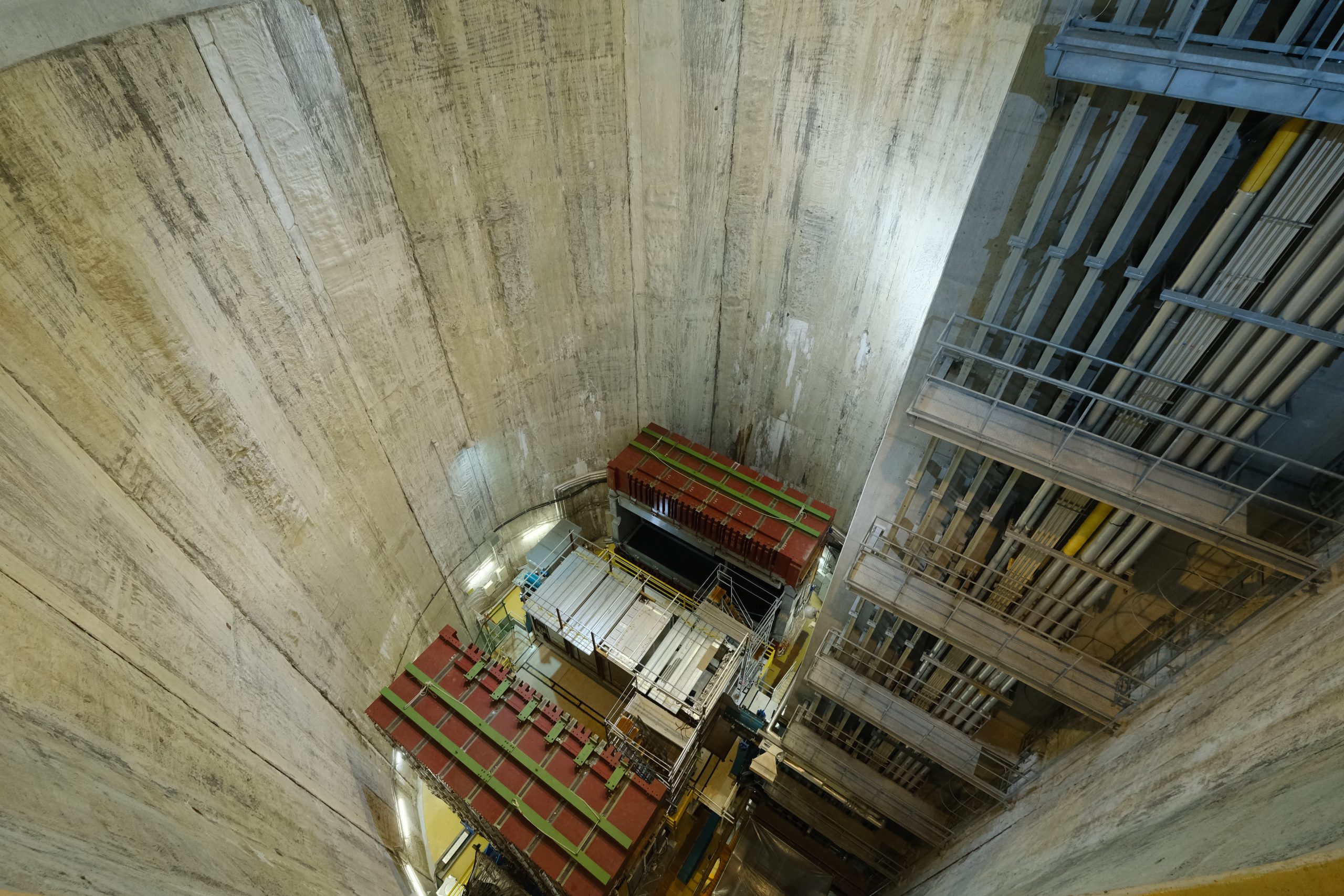
T2K (Tokai-to-Kamioka) is a long-baseline neutrino-oscillation experiment – neutrinos produced at the Japan Proton Accelerator Research Complex (J-PARC) in Tokai are observed at the Super-Kamiokande detector 295km away. In 2013, T2K discovered the oscillation of muon neutrinos to electron neutrinos. Since 2014, the experiment has been operating using not only neutrino beams but also antineutrino beams to examine why the universe is made of matter, and not antimatter.
Research at Hadron Experimental Facility
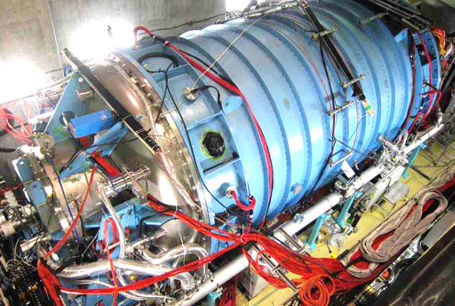
At the Hadron Experimental Facility (HEF), the origin of matter is investigated on the microscopic scale to answer questions such as: what are the ultimate building blocks of matter? what forces bind them together? The nuclear force is studied by producing non-standard nuclei including particles other than protons and neutrons. Experiments are conducted into a wide range of topics in nuclear and particle physics.
Experimental Cosmophysics
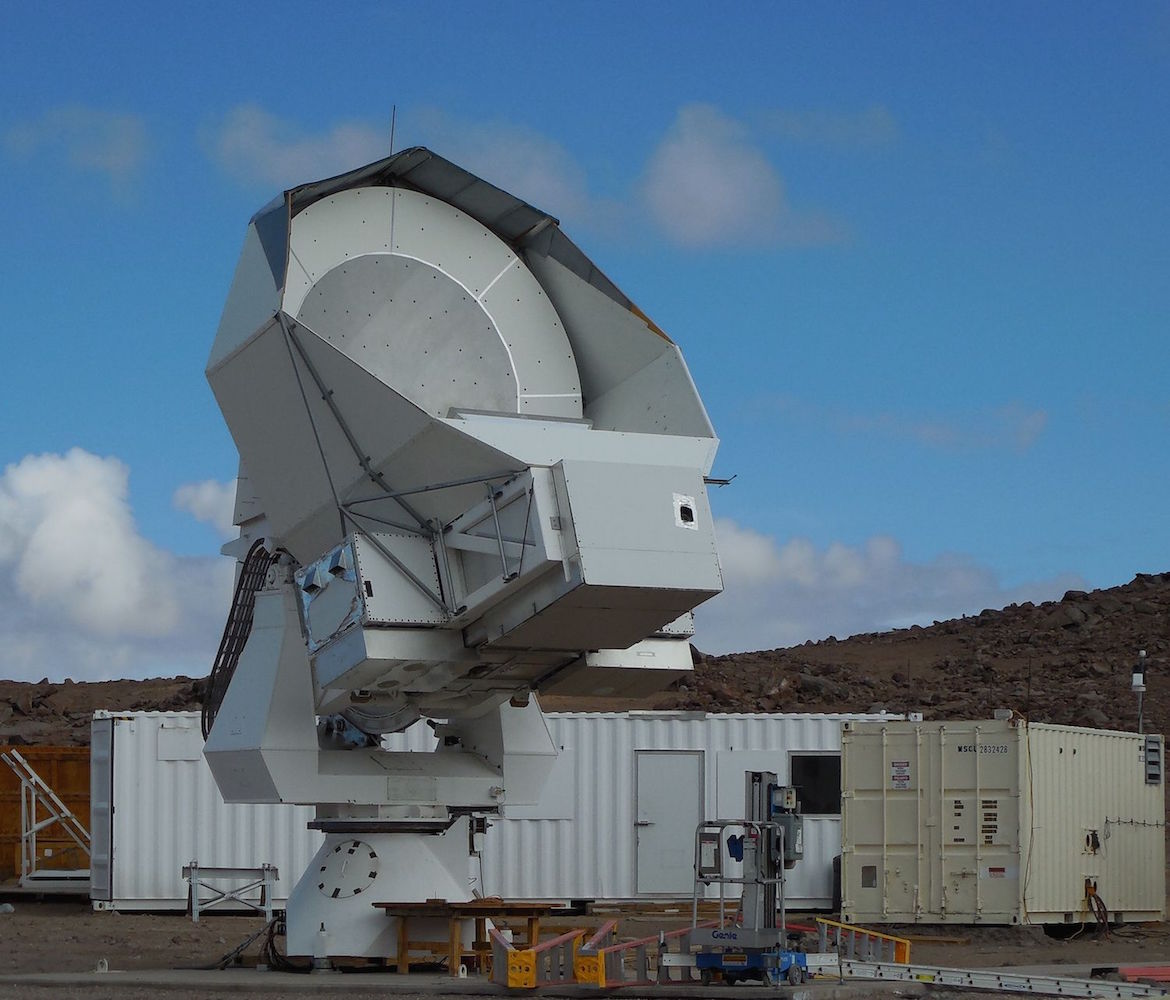
The universe began 13.8 billion years ago from a rapid expansion known as “inflation,” before the ultra-hot Big Bang. Observations of the oldest light in the universe, the Cosmic Microwave Background (CMB), are being conducted to seek definitive evidence for this theory. If we can observe a specific type of polarization mode within the CMB called “degree-scale B-mode polarization,” it would serve as evidence for inflation, marking one of the greatest discoveries in the history of science. The Experimental Cosmophysics group is dedicated to studying and observing this effect.
Muon – Neutron
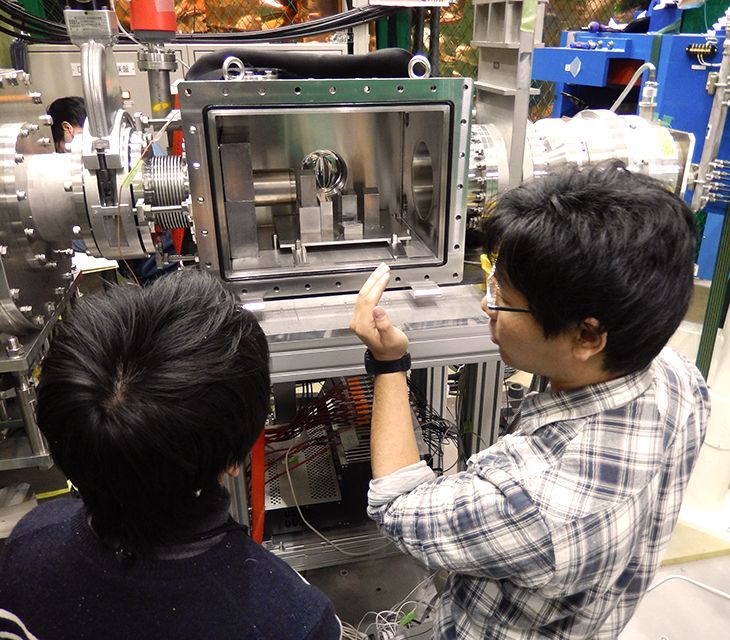
In quantum mechanics, various particles briefly appear and disappear under the uncertainty principle, a.k.a. quantum loop effect. The particles and interactions within these quantum loops contain unknown physical laws not included in the Standard Model. This effect directly appears in the anomalous magnetic moment (g-2) and electric dipole moment (EDM).
AR Test Beam Line
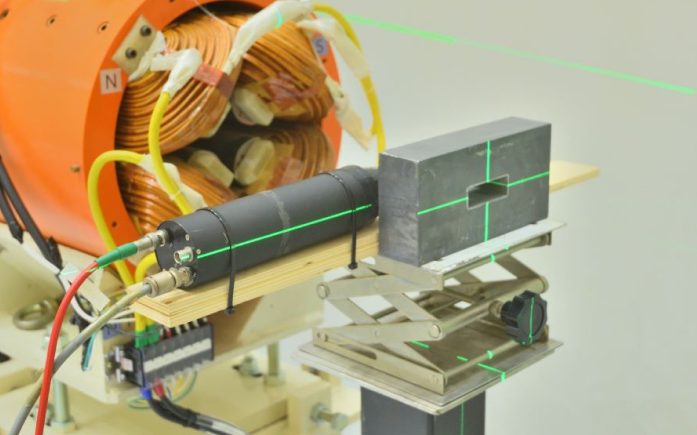
The Test Beam Line constructed in the KEK Tsukuba Campus PF-AR for the purpose of testing detectors. The operation for the users started in the 2023 fiscal year.
Element selective isotope separation system : KISS (KEK Isotope Separation System)
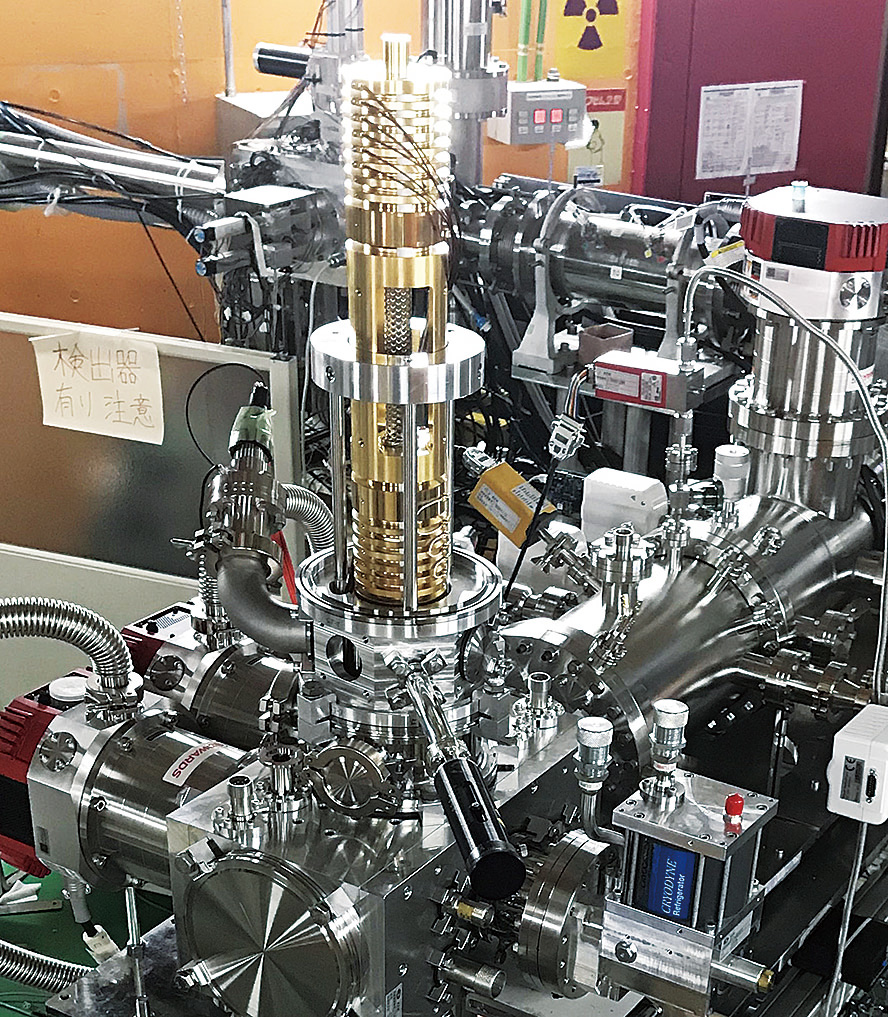
KISS is particularly well suited for producing neutron-rich, short-lived nuclides, which are the origin of gold, platinum, and uranium. The newly developed Multi-Reflection Time-of-Flight (MRTOF) Mass Spectrographs are used in comprehensive mass measurement programs to determine the elements’ origin, and the mass measurement of the superheavy element nihonium isotope. MRTOF is not only the basis for the identification of new elements but will also contribute to the discovery of “islands of stability,” which are much heavier and longer-lived than the currently known superheavy nuclides.
